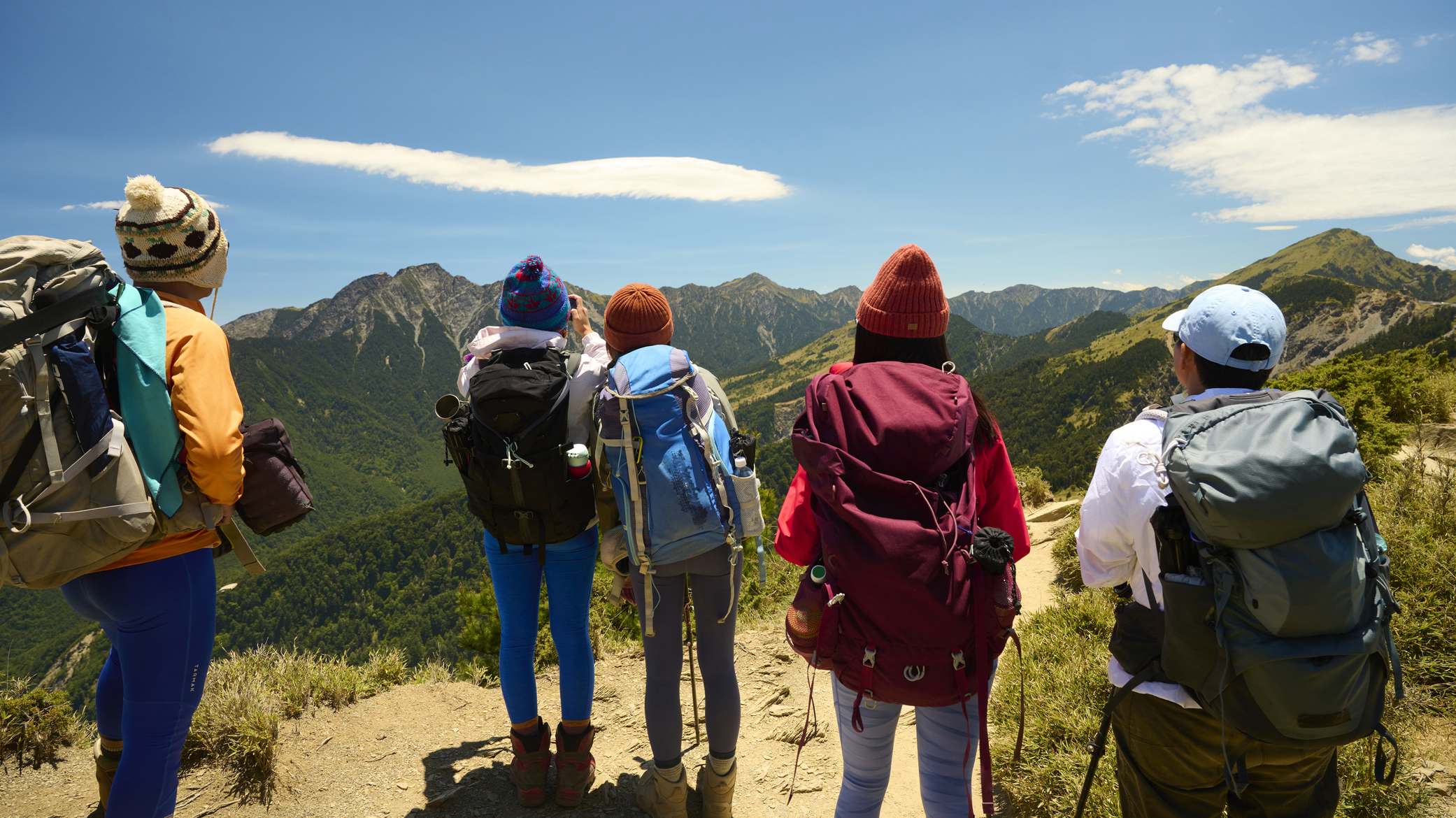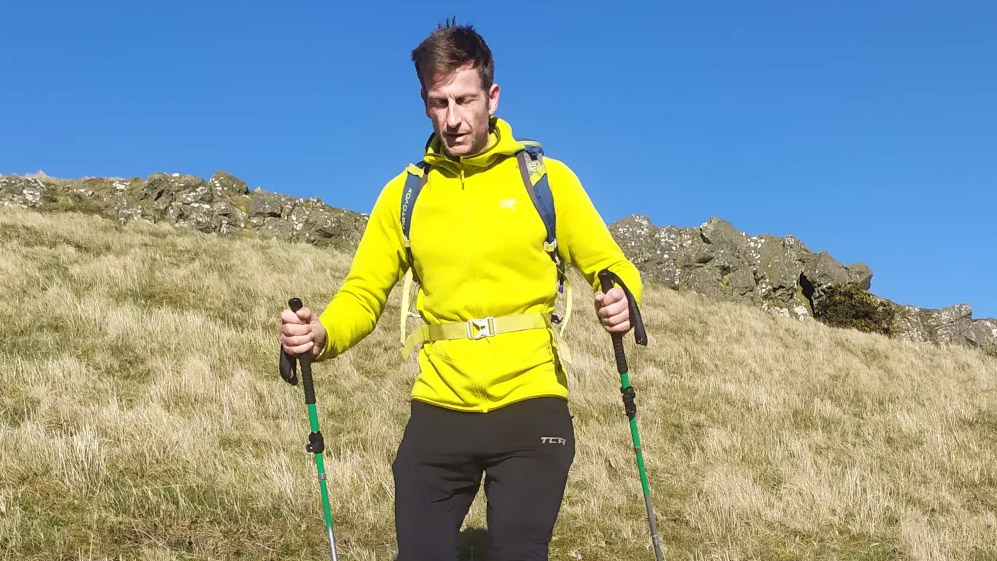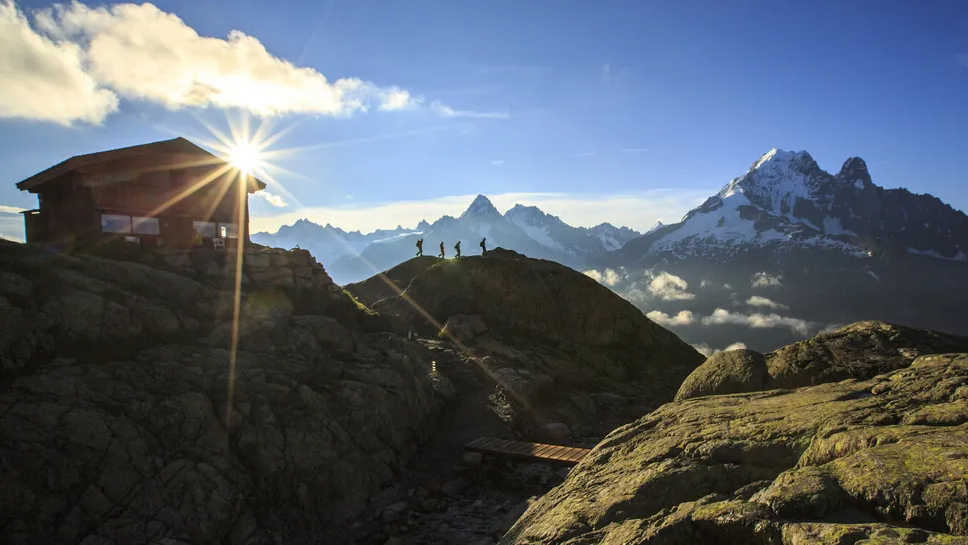What size backpack do I need? The right sized packs for the right adventures
“What size backpack do I need?” As we're often asked this, here are our guidelines on the ideal backpack size for day hikes, short camping trips, and multi-day thru-hikes

"What size of backpack do I need?" we're often asked. It's usually followed by something like "for a weekend wild camping expedition" or "for winter walking." Obviously, the answer depends on your chosen activity. Get too small a backpack and you won't be able to fit all your essentials; go too large and you'll end up filling it with stuff you don't actually need, weighing yourself down in the process.
Then, there's the fact that you might be doing a long backpacking expedition one season and then a lightweight hut-to-hut trek the next, with many day hikes in between. A one pack-size fits all approach would certainly be the most economical option, though this can be tricky to arrive at.
However, the best hiking backpacks of today are a versatile bunch and you may be able to consider what you've got planned and arrive at a nicely sized and trusty stalwart for the trails. To help you make this consideration, we're here with this guide.
Meet the expert

Kieran is passionate about the outdoors, particularly when it comes to climbing or quality backpacking trips. Our esteemed former editor has been on adventures of all sizes, from Himalayan epics to microadventures in the UK. He knows all about making sure he's got the right backpack for the job.
Today's best deals
The trip duration consideration
The following guidelines offer a ballpark estimate of required pack sizes for different trip durations in 2/3-season conditions before accounting for the variables mentioned below.
Trip duration Backpack capacity in liters
Day hike 15 – 25
Overnight (1 night) 25 – 40
All the latest inspiration, tips and guides to help you plan your next Advnture!
Weekend (2 nights) 40 – 50
Multi-day (3-5 nights) 50 – 65
Extended trips (5+ nights) 65+
Weather and the seasons
- You need far less capacity for summer adventures than winter adventures
- We'd recommend at least 35 liters for one day winter adventures above the snow line

On summer day hikes, the heaviest item in your pack is likely to be your water bottle, and your total pack probably won’t pip the 10-pound mark unless you’re carrying technical kit for ascents above the snow line in alpine regions or standing in as the designated Sherpa for you hiking buddies, partner, or child. This, of course, is because summer hiking essentials are generally far lighter than those required for shoulder-season or winter hiking. And it ain’t all about the weight… summer hiking gear is also far less bulky than winter gear, meaning you can get away with a much smaller sized daypack for fair-weather adventuring.
In winter, you may be carrying extra clothing (down jackets, rain pants, additional layers), an ice axe, crampons, an emergency shelter, blizzard jacket, ski goggles etc etc. So you can see how the bulk of a pack soon builds up. We'd recommend at least around 35 liters for one day winter adventures above the snow line.
The same applies, of course, to camping and backpacking – for cold-weather outings, you’ll need to carry a few cold-weather-specific pieces of kit such as a beefier sleeping bag and sleeping pad, a bulkier tent, possibly a separate groundsheet, and maybe more fuel for your camping stove, all of which will require additional capacity in your pack.
Entourage
- If you're carrying someone else's kit too, work out the extra capacity needed
- Do this by putting their stuff into a bag with a known capacity
Gauging the ideal backpack capacity for yourself is tricky enough, but matters get a whole lot more complicated when you’re doing the hauling for your trail buddy, whether he/she be a pet, child, parent, or anyone else who’s happy to lighten their own load by adding to yours(!).
The easiest way to tot up the total capacity required for yourself and your “plus one” is to calculate the capacity of pack needed for each of your kits independently. Do this by gathering all the kit you need for your partner, stuffing it into a smaller “measuring” sack (circa 20 liters) and add the capacity used up in this pack to the capacity you think you’ll need for your own kit (more on measuring this below).
Accommodation
- If you're carrying a tent and sleeping bag, you'll need much more capacity
- If you're hiking between fixed accommodation, you can get away with less

Tents and sleeping bags are by far the two bulkiest items in any backpack. This being so, if you plan on hiking hut-to-hut or staying in accommodation where bedding will be provided, you can afford to opt for a pack at the lower end of the scale in the above guidelines.
Edibles
- Ensure you factor in the space required for your camping food
Depending on the size of your appetite and the length of your trip, the food you carry on your hiking or camping adventures could account for a sizeable share of your pack space. Whether you plan on doing multi-day backpacking trips or single overnighters, then, be sure to factor in the added space required for your fodder.
MO – minimalist or maximalist?
- Unless you've got your packing fine-tuned, opt for a slightly larger pack than you think you'll need

If you’re a fast-packer or thru-hiker, the chances are you’ve already fine-tuned your packing strategy (see how it's done in how to pack a backpack), trimmed down your kit to essentials only, and won’t want to undo your good work on this front by picking a pack that’s bigger – and heavier – than you need. If you are apt to carry the odd luxury, teddy bear, six-pack of beer, or other non-essentials, however, or simply don’t see the merit in the squeeze, your best bet is to plump for a pack at the larger end of the capacity ranges listed above.
How to measure the capacity you require
- Lay out all your gear you expect to take to ensure you don't forget anything
- Put it all into an old backpack or other bag that you know the capacity of
- Always err on the side of caution and go slightly bigger than this

When choosing a backpack, the objective should be to find a pack that can accommodate all the kit you’ll be carrying but which isn’t so big that you’re weighing yourself down with extra – and unnecessary – weight. While the above capacity ranges should help you in this respect, customizing your measurements will give you a more accurate estimation of the capacity you’ll require.
To do this, simply gather all the gear you would ordinarily carry on a hike or backpacking trip (ideally for the longest duration of trip you envision taking). Lay all of your gear out on the floor – this will help to ensure you don’t forget anything (as will our camping checklist). Pack all of your gear into an old backpack or – if you don’t have one – a duffel or even a trash can liner (as long as you know the capacity in liters), which you can then use as a measuring tool to get a handle on how much space you’ll need.
As a final tip, we’d always recommend shooting a few liters higher than you expect to need – buying a second pack will be pricey, cinching down compression straps to consolidate a smaller load costs you nothing.
Former Advnture editor Kieran is a climber, mountaineer, and author who divides his time between the Italian Alps, the US, and his native Scotland.
He has climbed a handful of 6000ers in the Himalayas, 4000ers in the Alps, 14ers in the US, and loves nothing more than a good long-distance wander in the wilderness. He climbs when he should be writing, writes when he should be sleeping, has fun always.
Kieran is the author of 'Climbing the Walls', an exploration of the mental health benefits of climbing, mountaineering, and the great outdoors.

